1. Olusanya BO, Davis AC, Hoffman HJ. Hearing loss: rising prevalence and impact. Bull World Health Organ. 2019; Oct. 1. 97(10):646A.

2. Gates GA, Mills JH. Presbycusis. Lancet. 2005; Sep. 366(9491):1111–20.

3. Ng JH, Loke AY. Determinants of hearing-aid adoption and use among the elderly: a systematic review. Int J Audiol. 2015; May. 54(5):291–300.

4. Chisolm TH, Johnson CE, Danhauer JL, Portz LJ, Abrams HB, Lesner S, et al. A systematic review of health-related quality of life and hearing aids: final report of the American Academy of Audiology Task Force on the Health-Related Quality of Life Benefits of Amplification in Adults. J Am Acad Audiol. 2007; Feb. 18(2):151–83.

5. Bisgaard N, Ruf S. Findings from EuroTrak surveys from 2009 to 2015: hearing loss prevalence, hearing aid adoption, and benefits of hearing aid use. Am J Audiol. 2017; Oct. 26(3S):451–61.

6. Moon IJ, Baek SY, Cho YS. Hearing aid use and associated factors in South Korea. Medicine (Baltimore). 2015; Oct. 94(42):e1580.

7. Kochkin S. MarkeTrak V: “Why my hearing aids are in the drawer”: the consumers’ perspective. Hear J. 2000; Feb. 53(2):34–41.
8. Houston DM, Bergeson TR. Hearing versus listening: attention to speech and its role in language acquisition in deaf infants with cochlear implants. Lingua. 2014; Jan. 139:10–25.

9. Henshaw H, Ferguson MA. Efficacy of individual computer-based auditory training for people with hearing loss: a systematic review of the evidence. PLoS One. 2013; May. 8(5):e62836.

10. Saunders GH, Smith SL, Chisolm TH, Frederick MT, McArdle RA, Wilson RH. A randomized control trial: supplementing hearing aid use with listening and communication enhancement (LACE) auditory training. Ear Hear. 2016; Jul-Aug. 37(4):381–96.

11. Sommers MS, Tye-Murray N, Barcroft J, Spehar BP. The effects of meaning-based auditory training on behavioral measures of perceptual effort in individuals with impaired hearing. Semin Hear. 2015; Nov. 36(4):263–72.

12. Yu J, Jeon H, Song C, Han W. Speech perception enhancement in elderly hearing aid users using an auditory training program for mobile devices. Geriatr Gerontol Int. 2017; Jan. 17(1):61–8.

13. Olusanya BO, Davis AC, Hoffman HJ. Hearing loss grades and the International Classification of Functioning, Disability and Health. Bull World Health Organ. 2019; Oct. 97(10):725–8.
14. Song YJ, Lee HJ, Jang HS. A study on the development of KNISEDASP (KNISE-Developmental Assessment of Speech Perception) for auditory training. Asan: Korea National Institute for Special Education;2010.
15. Kim JS, Shin EY, Shin HW, Lee KD. Development of Korean Consonant Perception Test. J Acoust Soc Korea. 2011; Jul. 30(5):295–302.

16. An LJ, Kim JS, Pae SY. The study on developing a test of speech perception in noise. Korean J Audiol. 2002; Dec. 6(2):118–27.
17. Chu H, Cho YS, Park SN, Byun JY, Shin JE, Han GC, et al. Standardization for a Korean Adaptation of the International Outcome Inventory for Hearing Aids: study of validity and reliability. Korean J Otorhinolaryngol-Head Neck Surg. 2012; Jan. 55(1):20–5.

18. Park SN, Han GC, Cho YS, Byun JY, Shin JE, Chu HS, et al. Standardization for a Korean version of Hearing Handicap Inventory for the elderly. Korean J Otorhinolaryngol-Head Neck Surg. 2011; Dec. 54(12):828–34.

19. Weinstein BE. Outcome measures in the hearing aid fitting/selection process. Trends Amplif. 1997; Dec. 2(4):117–37.

20. Chisolm TH, Saunders GH, Frederick MT, McArdle RA, Smith SL, Wilson RH. Learning to listen again: the role of compliance in auditory training for adults with hearing loss. Am J Audiol. 2013; Dec. 22(2):339–42.

21. Hickson L, Worrall L, Scarinci N. A randomized controlled trial evaluating the active communication education program for older people with hearing impairment. Ear Hear. 2007; Apr. 28(2):212–30.

22. Preminger JE, Ziegler CH. Can auditory and visual speech perception be trained within a group setting. Am J Audiol. 2008; Jun. 17(1):80–97.

23. Humes LE, Skinner KG, Kinney DL, Rogers SE, Main AK, Quigley TM. Clinical effectiveness of an at-home auditory training program: a randomized controlled trial. Ear Hear. 2019; Sep/Oct. 40(5):1043–60.
24. Sweetow RW, Sabes JH. The need for and development of an adaptive Listening and Communication Enhancement (LACE) Program. J Am Acad Audiol. 2006; Sep. 17(8):538–58.

25. Stecker GC, Bowman GA, Yund EW, Herron TJ, Roup CM, Woods DL. Perceptual training improves syllable identification in new and experienced hearing aid users. J Rehabil Res Dev. 2006; Jul-Aug. 43(4):537–52.

26. Molloy K, Moore DR, Sohoglu E, Amitay S. Less is more: latent learning is maximized by shorter training sessions in auditory perceptual learning. PLoS One. 2012; 7(5):e36929.

27. Boothroyd A. Adult aural rehabilitation: what is it and does it work. Trends Amplif. 2007; Jun. 11(2):63–71.

28. de Miranda EC, Gil D, Iorio MC. Formal auditory training in elderly hearing aid users. Braz J Otorhinolaryngol. 2008; Nov-Dec. 74(6):919–25.

29. Lundberg M, Andersson G, Lunner T. A randomized, controlled trial of the short-term effects of complementing an educational program for hearing aid users with telephone consultations. J Am Acad Audiol. 2011; Nov-Dec. 22(10):654–62.

30. Cox RM, Alexander GC. The International Outcome Inventory for Hearing Aids (IOI-HA): psychometric properties of the English version. Int J Audiol. 2002; Jan. 41(1):30–5.
31. Ferguson M, Brandreth M, Brassington W, Leighton P, Wharrad H. A randomized controlled trial to evaluate the benefits of a multimedia educational program for first-time hearing aid users. Ear Hear. 2016; Mar-Apr. 37(2):123–36.

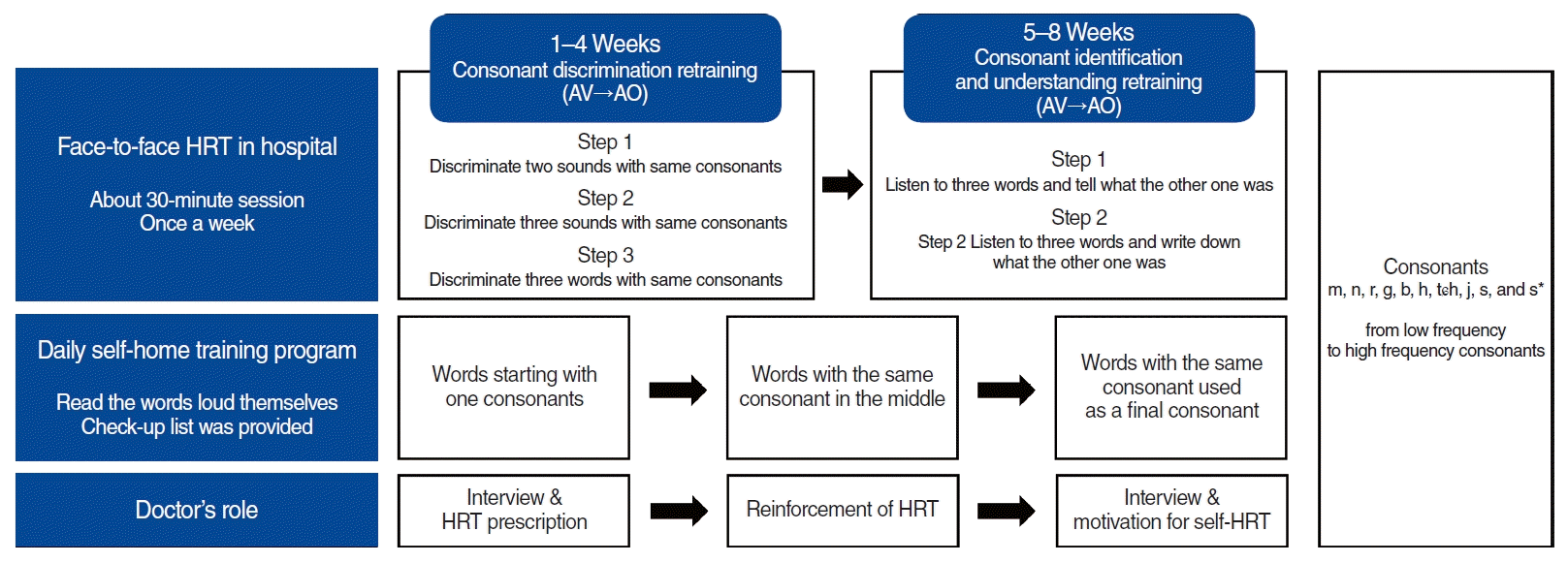
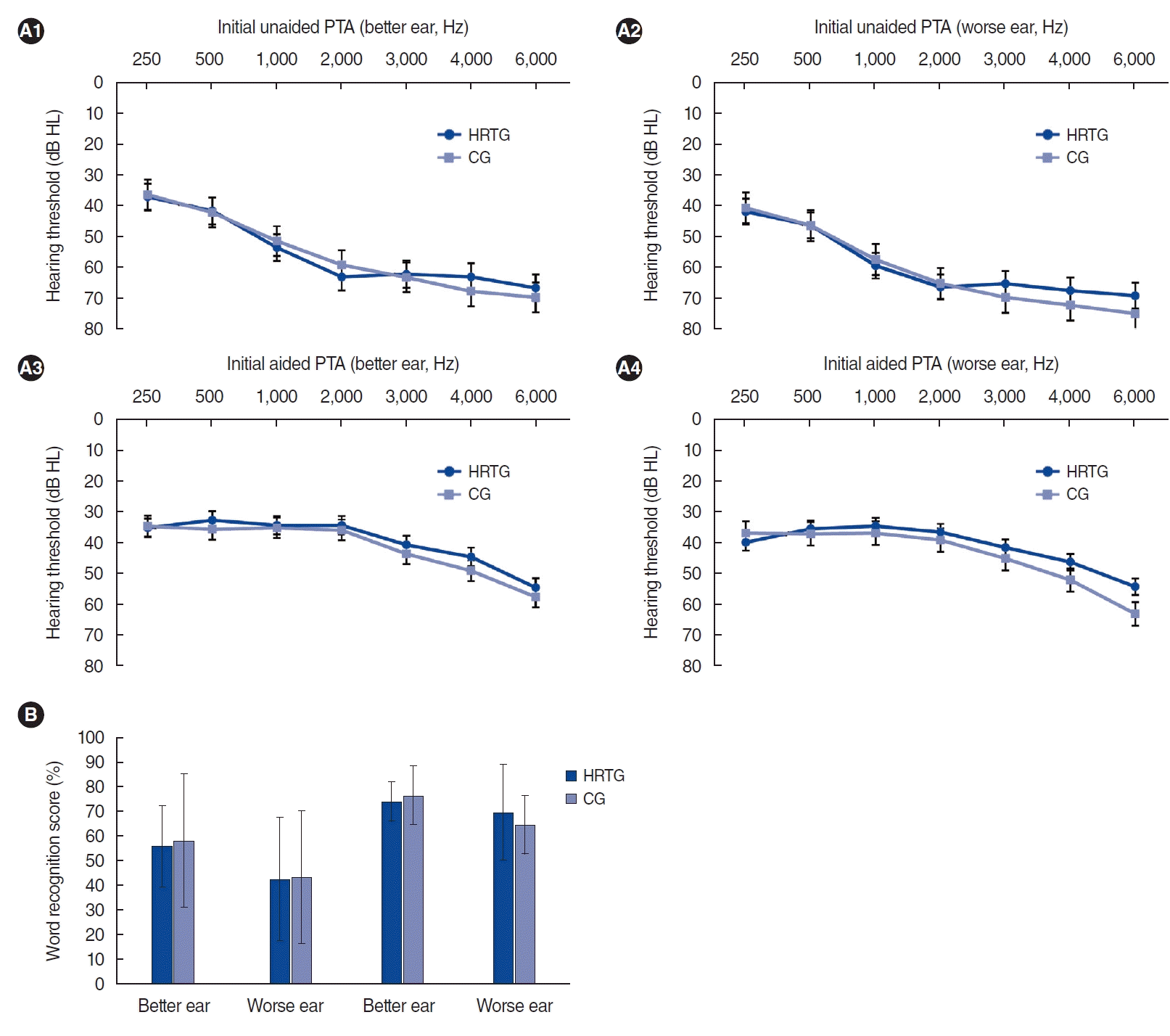
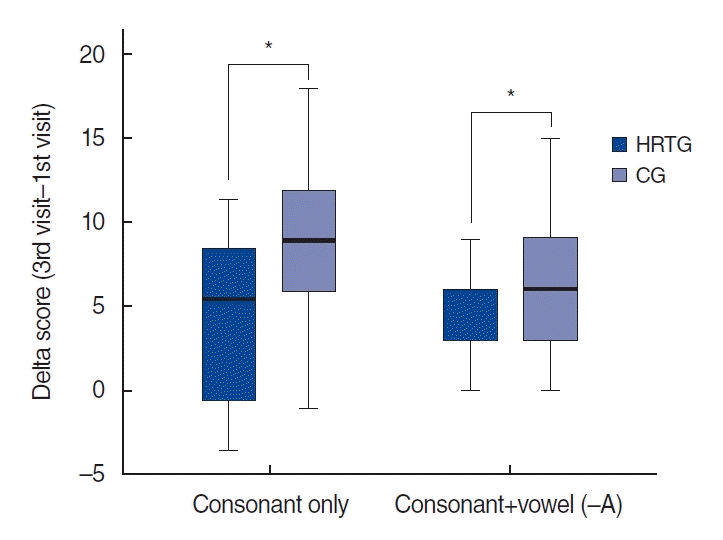
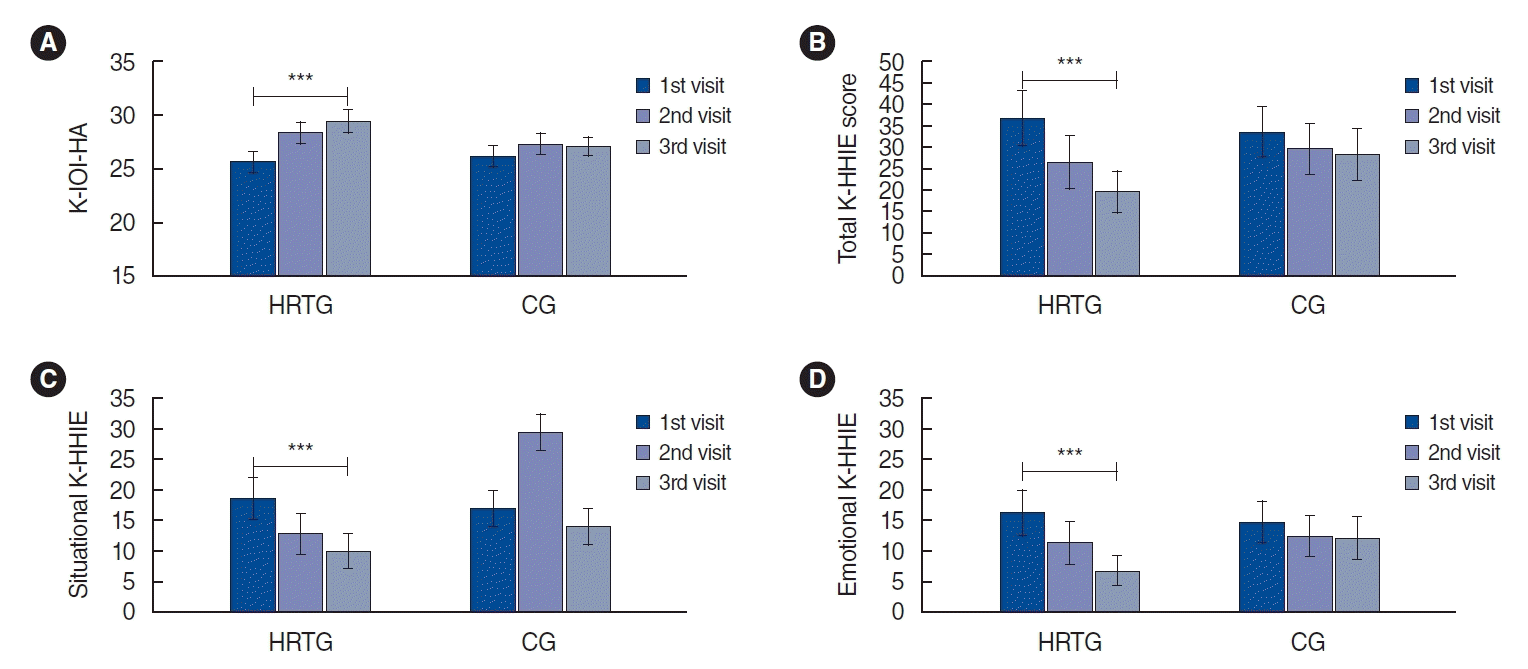




 PDF
PDF Citation
Citation Print
Print



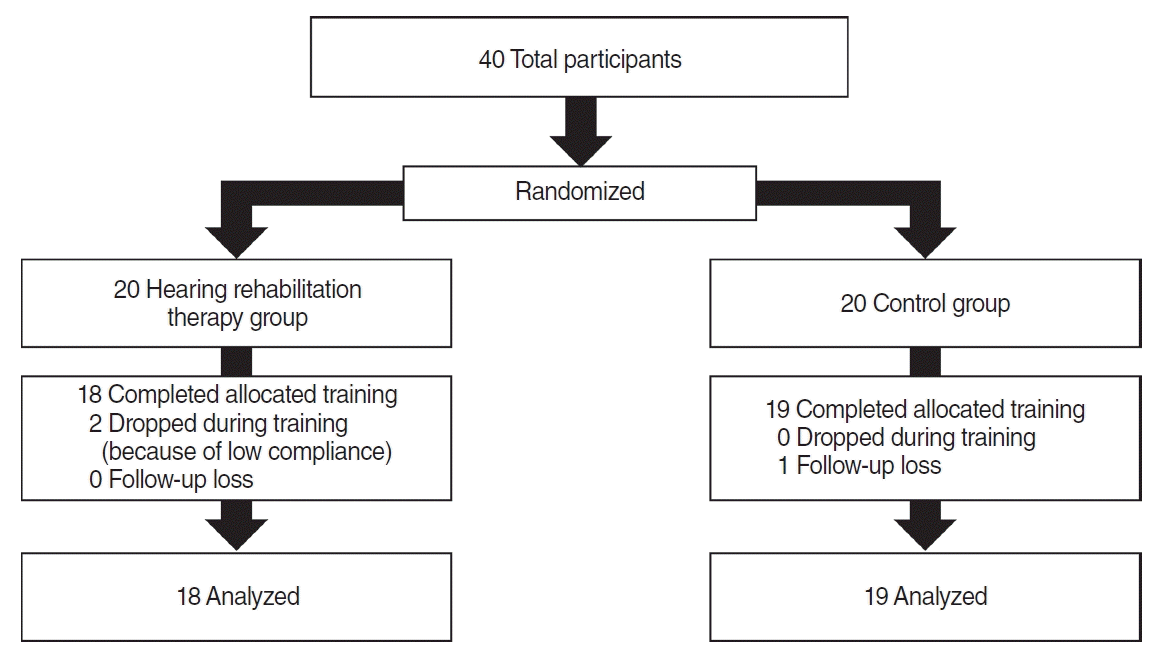
 XML Download
XML Download